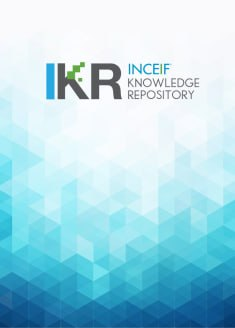
Browse by Author "Sarkar Humayun Kabir"
Results Per Page
Sort Options
- PublicationAre Islamic stock markets integrated globally? Evidence from time series techniquesSarkar Humayun Kabir; Ginanjar Dewandaru; Abul Mansur Mohammed Masih (American-Eurasian Network for Scientific Information, 2013)
This study attempts to investigate the issue of integration of Islamic equity markets (i) not only whether these markets are moving together or not (ii) but also whether the permanent and temporary components of these markets are moving together or not. Our evidence tends to indicate that these selected Islamic markets are bound together by one cointegrating relationship with the Euro zone Islamic equity market being the most leading one and the U.K. Islamic equity market being the follower. Beveridge-Nelson (BN) time series decomposition analysis reinforces the integration by indicating that both the permanent and transitory components of all these Islamic equity indices tend to move almost together leading to further integration of the Islamic equity markets. Finally, the study tends to suggest that the financial crises did affect the investments in Islamic Equity markets. The findings of this study are also consistent with the Shariah views of economic and financial integration and have strong policy implications.
- PublicationIs domestic stock price cointegrated with exchange rate and foreign stock price? Evidence from MalaysiaSarkar Humayun Kabir; Omar K. M. R. Bashar; Abul Mansur Mohammed Masih (Tennessee State University College of Business, 2014)
The growth of the financial sector of an economy such as, the stock market is usually found to be highly correlated with the growth of the real sector of an economy. In this study, we make an attempt to investigate whether there is any significant relationship between the stock prices, macroeconomic variables and foreign stock prices in an economy. Using the Malaysian quarterly data from 1991–2010 and the time series techniques such as, cointegration, long run structural modeling, vector error correction, variance decompositions, impulse response functions, and persistence profile approaches, we evidence a significant statistical relationship existing between the Malaysian stock prices, exchange rate and foreign stock prices with the exchange rate being the most leading variable. We also found evidence of negative impact of the Asian Financial Crisis on Malaysian stock prices in the short run. The results appear to be plausible and contain strong policy implications.
- PublicationRisk-return profiles of Islamic equities and commodity portfolios in different market conditionsSarkar Humayun Kabir; Abul Mansur Mohammed Masih; Obiyathulla Ismath Bacha (Taylor & Francis, 2017)
Motivated by the recent phenomenal growth in Islamic finance and the financialization of commodities, this study makes an initial attempt to investigate the risk return profiles of optimized portfolios combining (a) Islamic equities with commodities and (b) conventional equities with commodities during the crises and noncrises periods. The findings tend to indicate that Islamic equity-commodity portfolios provide relatively higher diversification benefits than the conventional equity-commodity portfolios during the 1997 Asian Financial Crisis triggered by the financial sector compared to the 2008 global financial crisis triggered by the real housing sector. The findings further suggest that except for a few cases, commodities in general and gold in particular improve diversification benefits.
- PublicationRisk-return profiles of Shariah compliant equity and commodity portfolioSarkar Humayun Kabir; Abul Mansur Mohammed Masih; Obiyathulla Ismath Bacha (INCEIF, 2013)
Since the recent financial crises, increases in contagion and correlation between assets have reduced the possibility of minimizing risk by way of diversification. The investors are therefore, looking for alternative assets such as, commodities, Islamic portfolios, etc. However, despite the very rapid growth of Islamic finance, there has hardly been any rigorous empirical research investigating the risk-return profiles of combining commodity portfolios with Islamic equities and/or with the mainstream equities. This study is aimed at filling this gap in the finance literature ...
- PublicationTime varying correlation between Islamic equity and commodity returns: implications for portfolio diversificationAftab Parvez Khan; Sarkar Humayun Kabir; Omar K. M. R. Bashar; Abul Mansur Mohammed Masih (Australian Academy of Business and Social Sciences, 2014)
This paper aims at investigating the time varying relationship between Islamic equity and commodity returns in order to examine how combination of Islamic equities and commodities contribute to the benefits of portfolio investors and managers. In order to investigate this relationship, we employed multivariate GARCH method on return series of five different commodity groups (energy, precious metals, agricultural, non-ferrous metals and softs group), Dow Jones spot commodity index as a proxy of an aggregate commodity market and Dow Jones Islamic index over the period January 3, 2001 - March 28, 2013. Our findings show that correlations between commodity and Islamic stock markets’ returns change in different time periods and these two markets moved very closely during 2008 financial crisis in particular. Besides, volatility of returns in both markets reached at their peaks during the 2008 crisis period. We also show that despite sharing some common features, commodities cannot be considered as a homogeneous asset class: a speculation phenomenon is for instance, highlighted for energy sector comprising oil, while the safe-haven role of gold is evidenced, which constitutes a part of precious metal sector.
Abstract View
2672988
View & Download
194521
